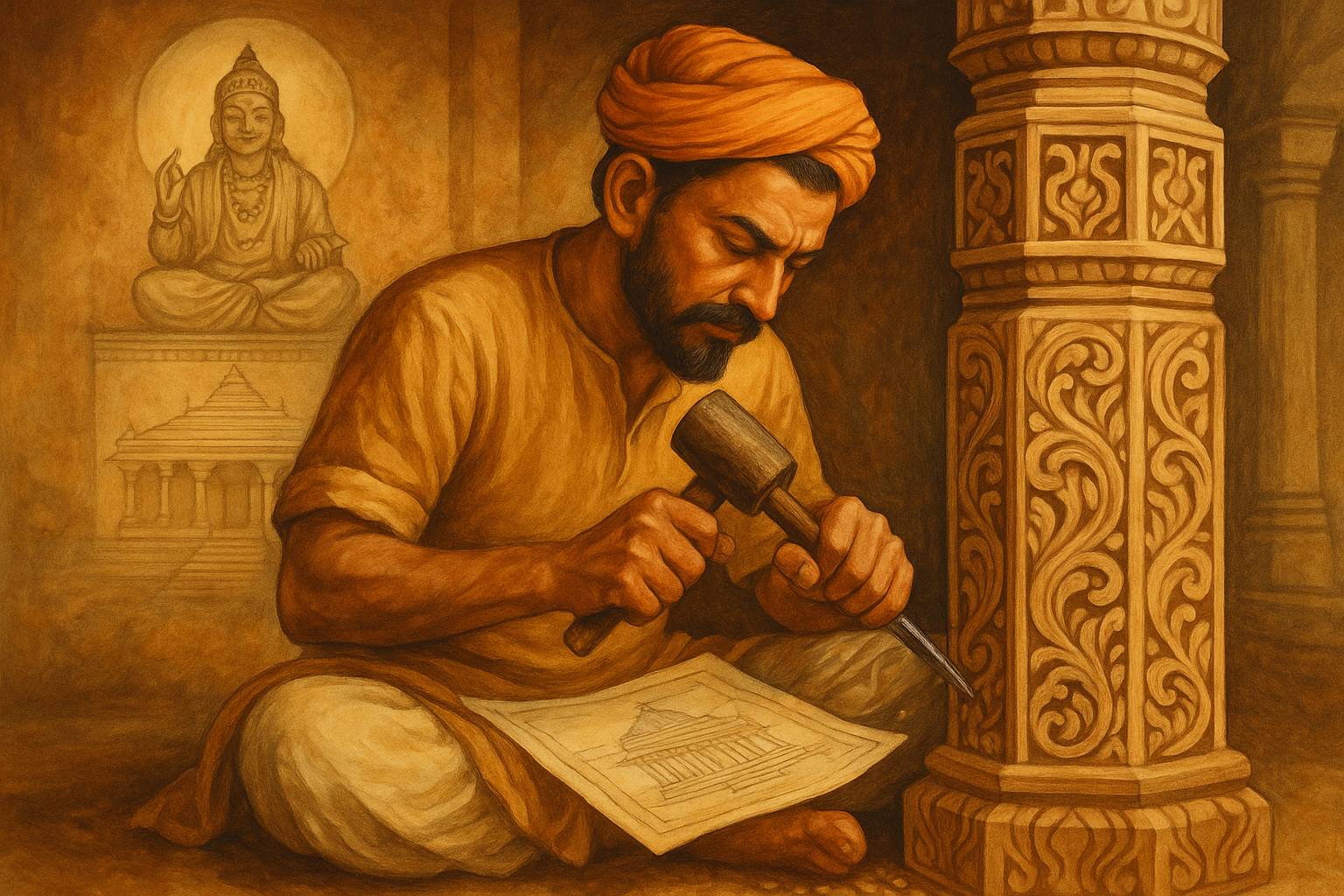Blog
Who Are the Gajjar Caste?

Who Are the Gajjar Caste? Unraveling Their Rich Heritage
Have you ever wondered about the origins of the Gajjar caste, a name that echoes through the history and culture of Gujarat? This intriguing community, tied to craftsmanship and tradition, holds a unique place in Indian society. In this article, we’ll journey through the history, traditions, and modern significance of the Gajjar caste, exploring what makes them a fascinating part of India’s diverse tapestry. Whether you’re tracing your roots or simply curious about cultural heritage, read on to uncover the story behind this distinctive group!
The Origins and Historical Roots of the Gajjar Caste
The Gajjar caste has deep roots in the western Indian state of Gujarat, where it emerged as a sub-caste within the Suthar community, a group traditionally known for carpentry. But where did this name come from? The term “Gajjar” is believed to derive from Sanskrit roots, with “gaj” meaning “measuring tape” and “dhar” meaning “keeper,” suggesting a connection to skilled craftsmanship, particularly in civil engineering and architecture.
Reflect: Have you ever considered how a name might reflect the skills or roles of a community’s ancestors? What other occupations might have shaped family names you know?
Historically, the Gajjar caste is linked to the broader Gurjar or Gujjar community, a group with a complex past spanning centuries. Some historians suggest that the ancestors of the Gajjars migrated to Gujarat in waves, possibly as early as the 1st century CE, bringing with them traditions of trade and craftsmanship. Over time, they became integral to village life, often serving on business committees and contributing to the construction of homes, temples, and infrastructure.
Try this: Imagine a village in medieval Gujarat. How might a Gajjar craftsman have influenced the community’s development?
The Cultural Significance of the Gajjar Caste
The Gajjar caste is more than just a name—it’s a reflection of cultural identity within the Vishwakarma community, a group revered for their artisan skills. Traditionally, Gajjars were carpenters, a role that required precision and creativity, shaping the physical and social landscape of Gujarat. Their work extended beyond carpentry to include engineering and architecture, leaving a lasting legacy in the region’s architecture.
Culturally, the Gajjar caste is predominantly Hindu, with many adhering to the Vaishnava sect, worshiping Vishwakarma, the patron deity of artisans. Festivals like Vishwakarma Day and Vasant Panchami are significant, marked by rituals and celebrations that honor their heritage. This connection to craftsmanship and spirituality sets them apart, blending practical skills with deep-rooted traditions.
Consider this: How might the religious practices of a community like the Gajjars influence their daily work and social standing?
Social Role and Evolution Over Time
In the past, the Gajjar caste held a respected position in village societies, often acting as leaders or advisors due to their expertise. From the 1500s to the 1900s, a Gajjar was typically a member of the village business committee, overseeing trade and construction projects. This role highlights their importance in a time when skilled labor was essential for community growth.
Over the centuries, the Gajjar caste evolved. While many continued in carpentry and related trades, others branched into modern professions like civil engineering, reflecting the adaptability of the community. Migration during the British colonial period also spread the Gajjar name globally, with communities establishing themselves in Africa, the UK, and North America, maintaining their cultural identity while integrating into new societies.
Question: Can you think of other communities that have adapted their traditional roles to modern times? How might this shape their identity today?
Comparing Gajjar to Other Gujarati Castes
To understand the Gajjar caste better, let’s compare it to other Gujarati communities:
- Patel: Known for landownership, Patels have a different social role focused on agriculture and administration.
- Shah: Often linked to the Bania caste, Shahs are associated with trade and commerce.
- Suthar: The broader community from which Gajjars originate, Suthars are artisans with a focus on carpentry and construction.
Unlike these groups, the Gajjar caste’s identity is tightly woven with craftsmanship, giving them a unique niche. Yet, like many castes, they’ve faced challenges in caste hierarchies, with some historical accounts debating their status within the Hindu social structure.
Exercise: Write a short comparison between the Gajjar and Patel castes. What similarities or differences stand out to you?
Modern Influence and Global Diaspora
Today, the Gajjar caste extends far beyond Gujarat. Migration has led to vibrant communities in cities like Mumbai, London, and Toronto, where Gajjars have excelled in fields like engineering, business, and education. Notable individuals, such as Dinesh Gajjar in the diamond industry, exemplify how this community has embraced innovation while honoring its roots.
The diaspora continues to celebrate its heritage through cultural gatherings and festivals, ensuring that traditions like Vishwakarma worship remain alive. This global presence also raises questions about how caste identity evolves outside its original context.
Reflect: How might living abroad affect the way a community like the Gajjars maintains its traditions?
Common Misconceptions About the Gajjar Caste
There are several myths surrounding the Gajjar caste that deserve clarification:
- Myth: Gajjars are the same as Gujjars. While related, Gajjars are a specific sub-caste within the Suthar community, distinct from the broader Gujjar tribe.
- Myth: All Gajjars are carpenters. Though carpentry is their traditional trade, many have diversified into other professions.
- Myth: Gajjars have a low social status. Historically, their role as village leaders suggests a respected position, though this varies by region.
Quick check: Have you heard any assumptions about the Gajjar caste? How might learning the facts change your perspective?
Practical Tips for Exploring Your Gajjar Heritage
If you’re interested in your Gajjar roots, consider these steps:
- Trace your family history: Look into oral stories or old documents to uncover your lineage.
- Connect with the community: Attend cultural events or join online groups to learn more.
- Research local records: Visit historical archives in Gujarat for insights into your ancestors’ roles.
- Celebrate traditions: Participate in festivals like Vishwakarma Day to honor your heritage.
Challenge: Pick one of these tips and try it out. What did you discover about your connection to the Gajjar caste?
Frequently Asked Questions (FAQ)
What is the origin of the Gajjar caste?
The Gajjar caste originated as a sub-caste of the Suthar community in Gujarat, with roots possibly tracing back to early migrations and a focus on carpentry.
Are Gajjars part of the Gujjar tribe?
While related to the broader Gujjar community, Gajjars are a distinct sub-caste within the Suthar Vishwakarma group, known for their artisan skills.
What is the traditional occupation of the Gajjar caste?
Traditionally, Gajjars were carpenters, but many have since moved into civil engineering and other modern professions.
How has the Gajjar caste spread globally?
Migration during the British colonial period and beyond has led to Gajjar communities in Africa, the UK, and North America, where they maintain their cultural identity.
Is the Gajjar caste considered high or low in the caste system?
Their status varies by region, but their historical role as village leaders suggests a respected position, though not uniformly high or low.
How can I learn more about my Gajjar ancestry?
Start by exploring family records, connecting with community members, or researching historical archives in Gujarat.
Conclusion: Embracing the Gajjar Legacy
The Gajjar caste is a testament to the resilience and creativity of a community that has shaped Gujarat’s history and beyond. From their origins as skilled craftsmen to their modern global presence, the Gajjars offer a rich story of adaptation and heritage. By understanding their past and present, you can appreciate the depth of this community’s contribution to society.
Take action: Share your thoughts or experiences with the Gajjar caste in the comments below! Have you discovered a connection to this heritage? Let’s keep the conversation alive!








